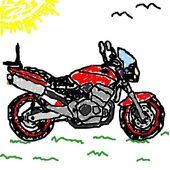I've checked this video: Surface Tension: Liquid Effects in The Last of Us. But after watching the video, I have difficulty imagine the way to create these blood effect.
So he said the blood has 2 parts: Animation & Shading

So here I imagine (I'm not an expert so the chance I imagine wrong is very high)
The animation part, you can use Adobe After Effect & Photoshop to create, I think the final result is a particle effect:
1. Get a green screen blood effect video --> BloodFx.mp4
2. [BloodFx.mp4] --> [Adobe Photoshop] --> Images files.
Then use Photoshop and some other program to tailor the images files, check the video in the spoiler below (I put it in the spoiler in case the image of the video too large for this page)
About the shading part. I vaguely imagine like this:
1. Write shading script (HLSL)
2. Use a sculpt software to sculpt the blood and use XNormal to generate the Normals.
But how can this work with the particle effect from the first part?
What is this blood, it's 2d sprite particle effect or it's liquid entity (like water, the sea or the whisky you can see in Micheal's glass in GTA V). What software require to make this blood effect?
Thanks for reading.




